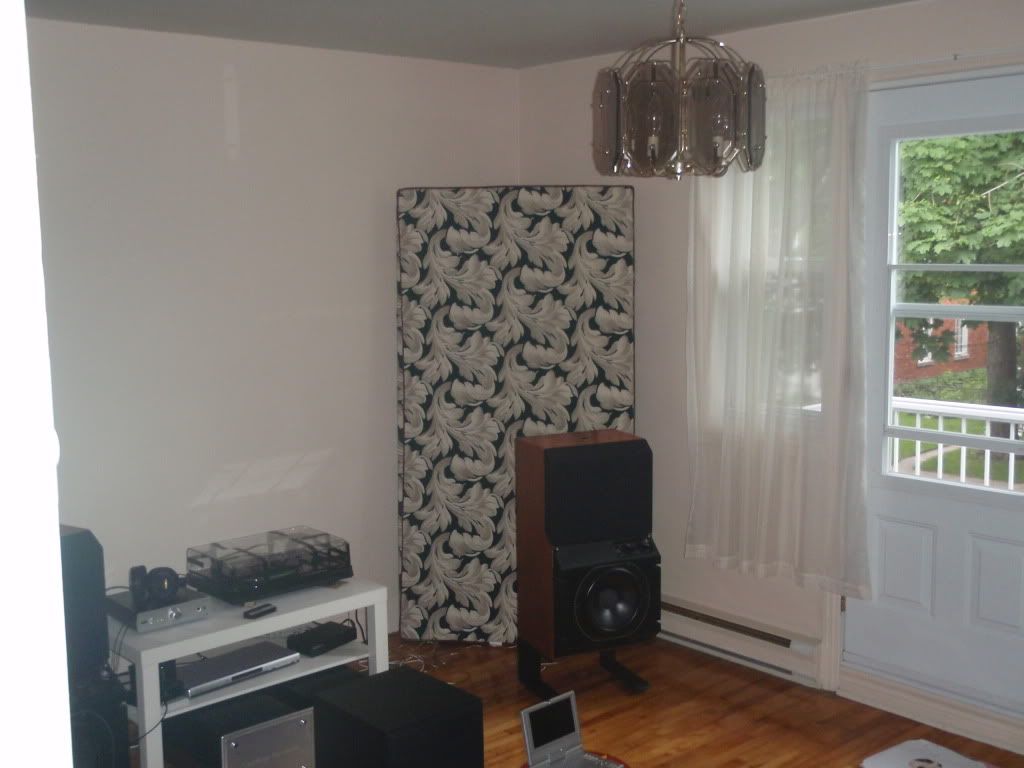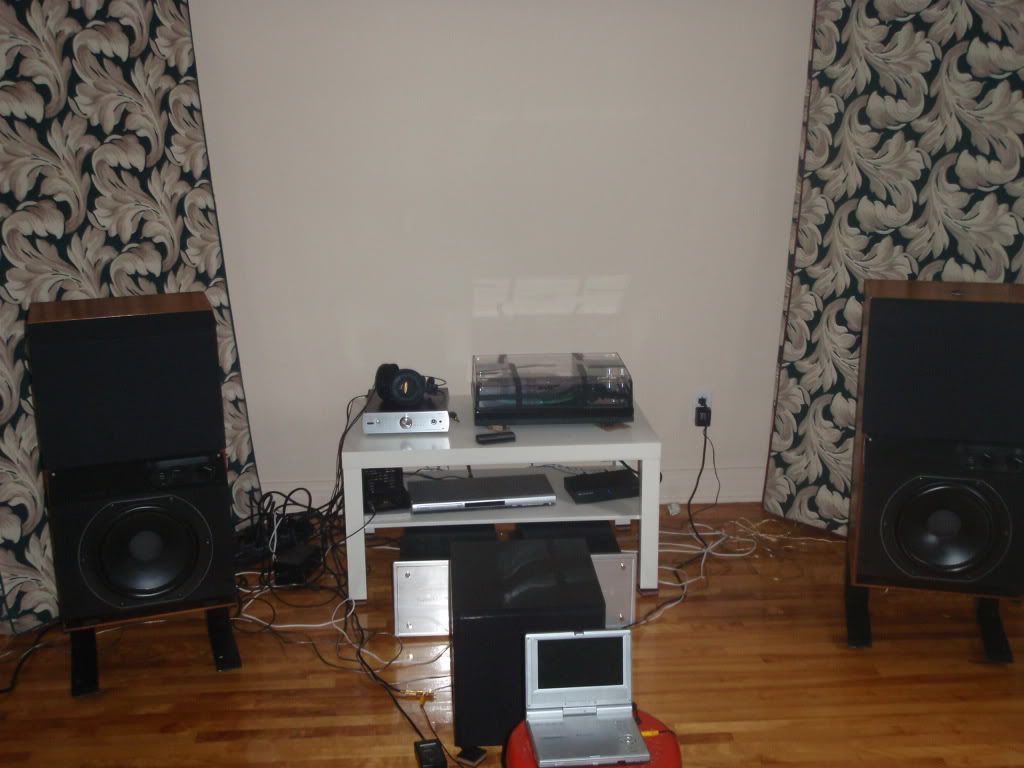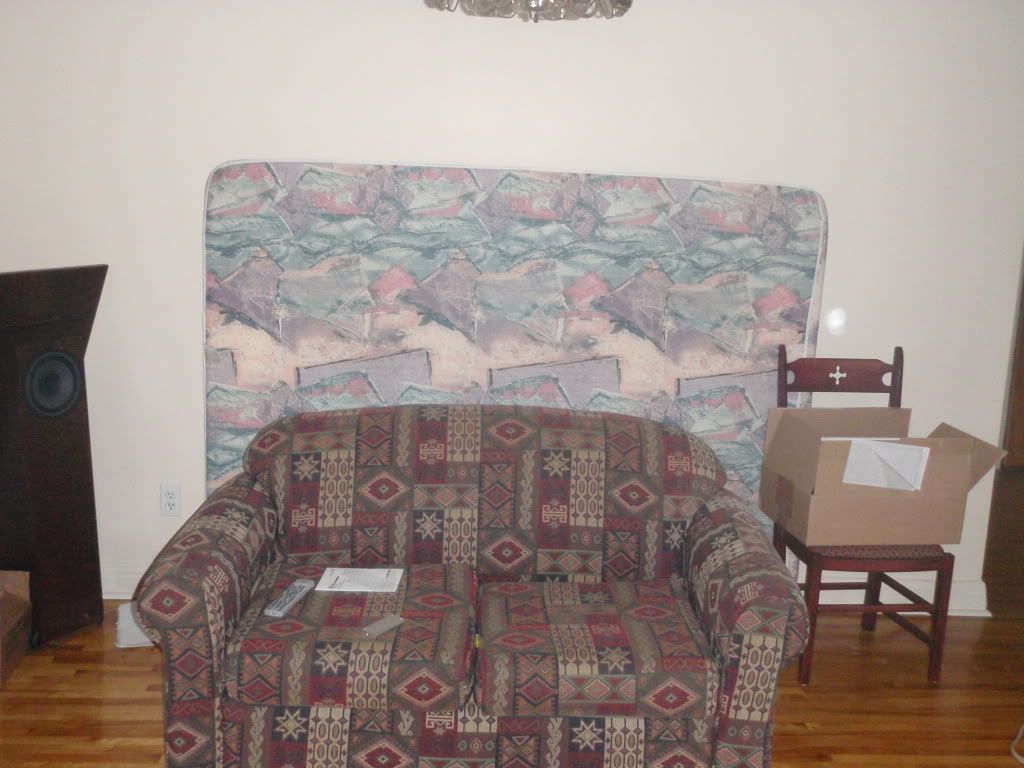Danny Q
New Head-Fier
- Joined
- Jun 3, 2009
- Posts
- 21
- Likes
- 0
If you decide to go the foam route, you can get it from Parts Express for pretty cheap:
Parts Express @ Amazon.com: foam
Parts Express @ Amazon.com: foam



| Originally Posted by papomaster /img/forum/go_quote.gif But, there were two problems: first, there was an annoying treble hump that made pianos and violins sound metallic, and my amps had to be placed under my rack due to lack of space, which heated everything and made my LPs stick to the mat after a while... First things first, I found a big piece of carpet which fits directly on the width of the room. I can also put the speakers on it, since they were destroying my floor protectors over time. |

| Originally Posted by papomaster /img/forum/go_quote.gif Back corners: 
|
| Originally Posted by papomaster /img/forum/go_quote.gif Hey, I'm only 20... And this is my grand-parents' house, they own a duplex and usually rent the top floor but right now there is noone so I can use one room for my setup. I started using it when they were in vacation in florida (they stay there 6 months a year, november-april) but when they came back they told me I could keep using it since it wasn't bothering them at all. |

| Originally Posted by Lead Ears /img/forum/go_quote.gif The mattress against the back wall looks like it could have been stolen from the set of Saved by the Bell!!! |


